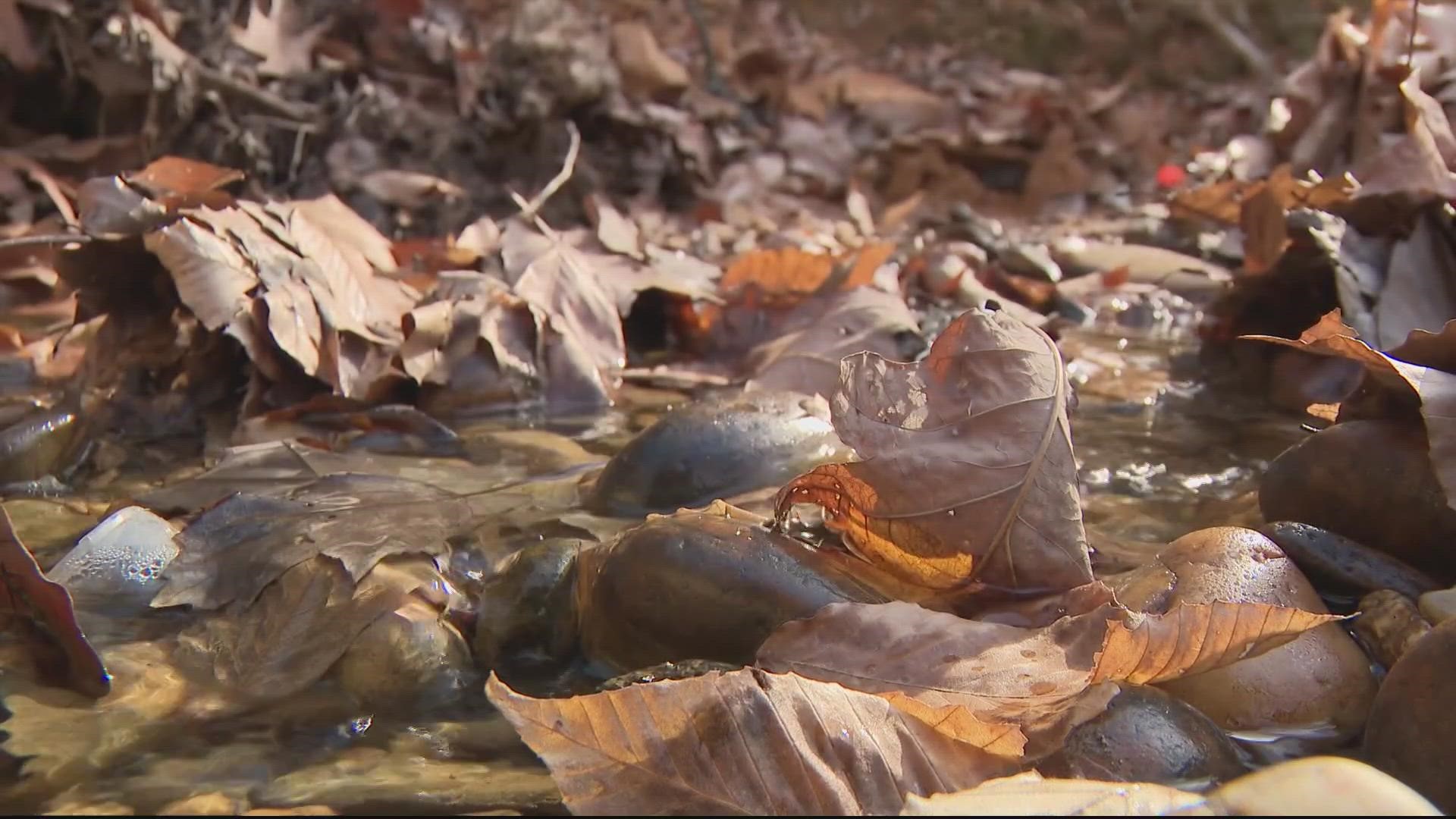WASHINGTON — Fort Dupont Park, located in southeast D.C., is 365 acres of lush forest nestled along a flowing river. The river, though beautiful, is in desperate need of repair. Over the years the sandy streambanks have experienced significant erosion due to a high concentration of stormwater runoff.
“If you took your hose in your backyard, and you sprayed it at the sand that sand would just disperse," explained Josh Burch an Environmental Protection Specialist with the District Department of Energy and Environment. "So, when stormwater hits the stream bank, that sand gets mobilized, it causes erosion that causes a streambank to collapse.”
What is causing such a high concentration of stormwater? Urban development.
Hundreds of years ago the river was surrounded by impervious surfaces, which means the ground could absorb most of the rain that fell. Today, the river is surrounded by roads, houses, and buildings that cannot absorb rain. The excess water flows into the storm drains which shoots straight into the Fort Dupont Park river. This excess flow causes the streambanks to erode which leads to a whole heap of problems.
The first is the environmental impact.
Streambank erosion causes the river water to become muddy, and sunlight cannot pass through to the bottom of the riverbed. This starts a domino effect of negative impacts.
“If the sunlight can't get to the bottom of the river plants can't grow and if the plants can't grow, they can't act as natural filters for the water, nor can they create dissolved oxygen for aquatic life," Burch said. "So, by restoring the stream by stopping the stream bank erosion, we should be able to clean up the Anacostia River, the Potomac River, and the Chesapeake Bay.”
Trees are also falling at a much higher rate because the ground they were rooted in was eroded away. The falling trees impact the recreational aspect of the park. This poses a danger to those trying to safely enjoy the park because trails can become blocked. Fewer trees also open up the tree canopy which can increase nonnative plants.
The National Parks Service is partnering with the District Department of Environment and Energy to fix those problems. They are proposing 18,600 feet of stream restoration.
How do they plan to fix it all?
“We're going to fill up the stream, six to seven feet, with material, sand and stone, and we're going to allow the stream to spread out," Burch said. "So, when that water spreads out, it reduces the erosive forces of the stream. So, we're going to be both restoring nature and we're going to try to create a stable stream based on all the urban conditions around it.”
The public comment period for this project is open until March 2nd. If all goes to plan, this stream restoration project could be done as early as 2026.
WATCH NEXT: Types of precipitation explained | Weather 101

